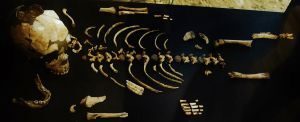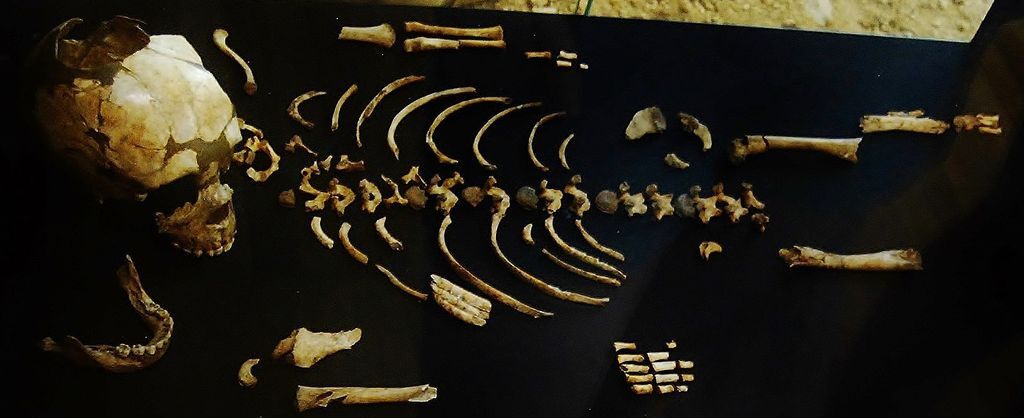
A study* suggests that Neanderthal infants were born with many skeletal features of adult Neanderthals. While it is known that many differences between Neanderthal and modern human skulls are present at birth, it is not clear if the same is true of differences in the rest of the body. Tim Weaver of the University of California, Davis, and other colleagues measured the lengths and widths of the arm, leg, and pelvic bones from the two most complete Neanderthal neonate skeletons: one from Russia (‘Mezmaiskaya 1’ from the Mezmaiskaya Cave) and one from France (‘Le Moustier 2’ from the Le Moustier rock shelter). The authors compared the skeletons’ features to those from a sample of recent African-American and European-American fetal skeletons from the National Museum of Natural History in Washington, DC. Compared with the recent human specimens, the Neanderthal specimens had large hips relative to the length of the thigh bones, indicative of a wide body. The Neanderthal from Russia had a longer pubis relative to the size of the hips, compared with modern humans, and the ends of the Neanderthals’ long bones were wider relative to their length than in modern humans. The differences between Neanderthal and modern human neonate skeletons are similar to the differences between Neanderthal and modern human adults. These results suggest that most skeletal differences between Neanderthals and humans are established at birth, according to the authors.
________________________________________
Neanderthal child bones. Leo Fyllnet, Wikimedia Commons
_____________________________________________________
Source: Adapted and edited from the subject Proceedings of the National Academy of Sciences (PNAS) press release.
_____________________________________________________
*“Neonatal postcrania from Mezmaiskaya, Russia, and Le Moustier, France, and the development of Neandertal body form,” by Timothy D. Weaver et al.
_____________________________________________________

______________________________________________
Travel and learn with Far Horizons.
____________________________________________
This richly illustrated issue includes the following stories: Recent findings shedding new light on the whereabouts of the remains of Philip of Macedon, father of Alexander the Great; how an archaeologist-sculptor is bringing bones of the dead back to life; archaeologists uncovering town life at the dawn of civilization; an exclusive interview with internationally acclaimed archaeologist James M. Adovasio about what makes the Meadowcroft Rockshelter prominent in the ongoing search for the first Americans; what archaeologists are finding at the site of the ancient city of Gath, the home town of the biblical Philistine giant, Goliath; and how scientists are redrawing the picture of human evolution in Europe. Find it on Amazon.com.






